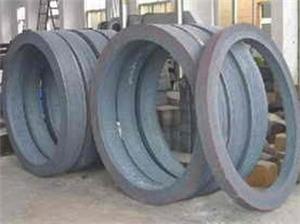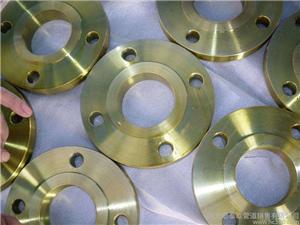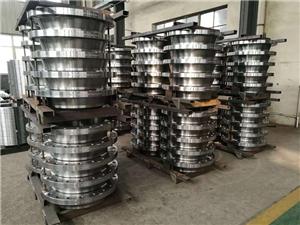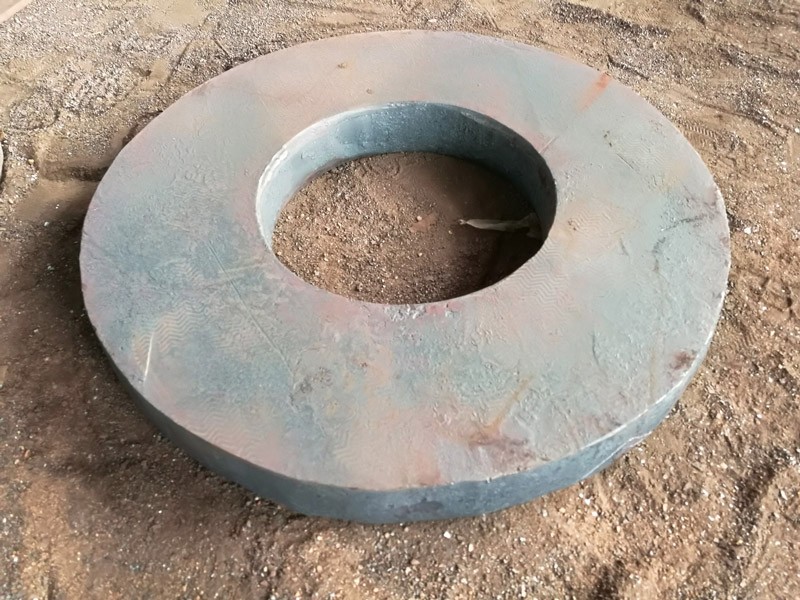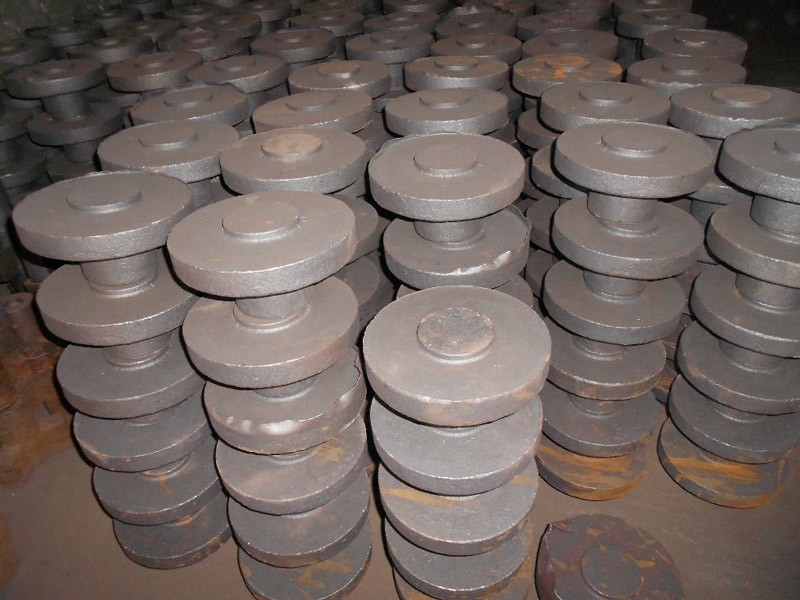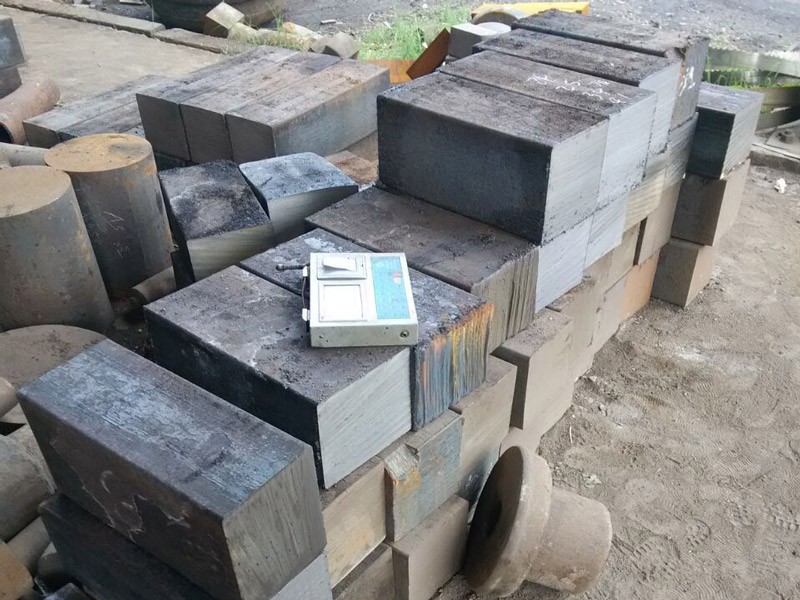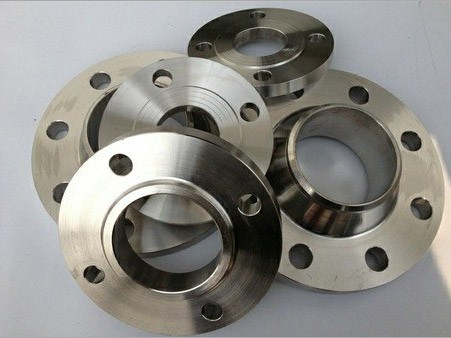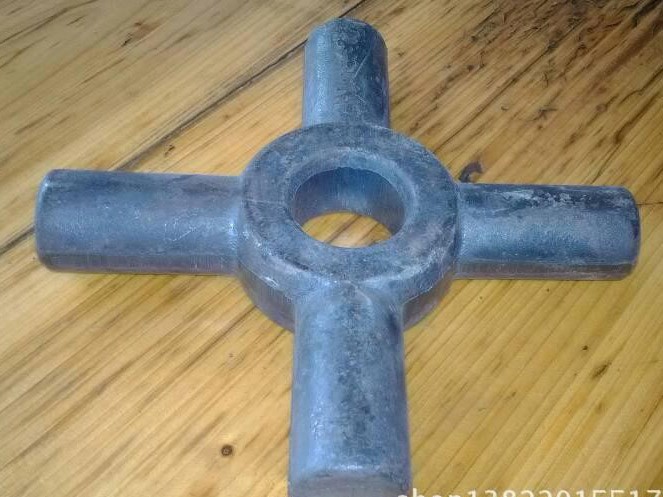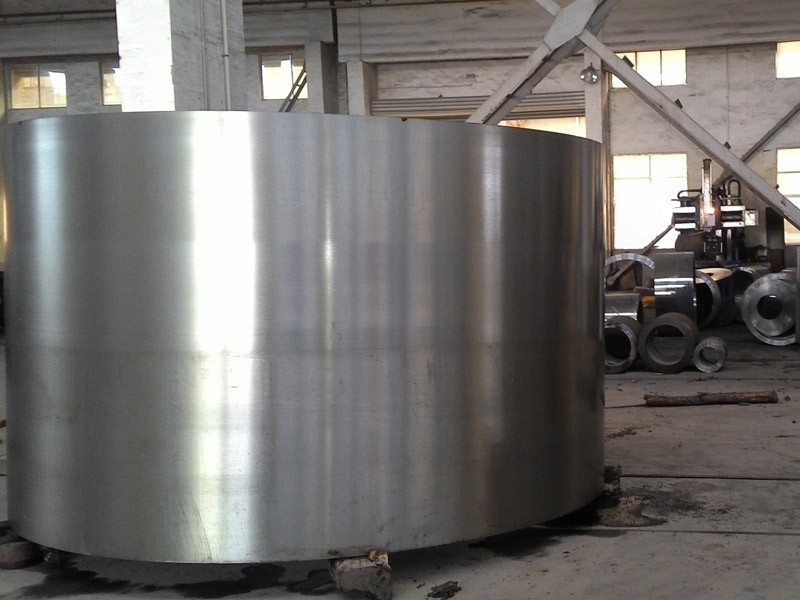-
Disc Forgings
Disc forgings
Send Email Details
I. product introduction
Disc forging is one of the most common parts in machining. It has a wide range of applications. Guide sleeve on fixture; Disc forgings usually provide support and guidance. Different disk parts also have a lot of similarities, such as the main surface is basically cylindrical, they have a higher dimensional accuracy, shape accuracy and surface roughness requirements, and a high degree of coaxiality requirements and many other common.
Ii. Product parameters
Iii. Product advantages
Typical disc forgings by a number of end face, deep hole, thin wall, curved surface, external contour combination of more complex disc shaped parts for detailed processing analysis, including drawing analysis, determine the processing process, choose the machine model, choose the size of the blank, determine the knife route and processing sequence and the main part of the program.
Disc forgings are complex disc parts composed of multiple end faces, deep holes, threaded holes, curved surfaces, grooves and external contours. It is characterized by the basic shape of the parts in the shape of a disk block, parts surface collection of a variety of typical surface. When processing, the number of clamping is generally less, but the tool used is generally more, the program is more tedious. It is necessary to make full preparation before processing, including drawing analysis, determination of processing technology, selection of machine tool model, selection of blank size, determination of knife route and processing sequence, etc. The preliminary preparation work is relatively complex. -
Sleeve Forging
Sleeve Forging is a product of forging industry, a type of forging.Is a blank metal (excluding plate) applied external forces, through plastic deformation molding requirements into a suitable compression force into a ring object.This force is typically achieved by the use of a hammer or pressure.The forging process creates fine grain structures and improves the physical properties of the metal.Ring forging can be seen everywhere in daily life. It is an industrial product.
Send Email Details
Sleeve Forging is the workpiece or blank obtained by forging and deforming the metal blank.The mechanical properties of metal billet can be changed by applying pressure to shape and deform it.Through forging, the porosity and holes of metal can be eliminated, and the mechanical properties of forging can be improved.
Sleeve Forging is to roll forging into a round, can basically control the dimensional tolerance of products, reduce the amount of car processing.
Bearing and ring flange product blank.Basic process: blanking - forging - ring forming.
Sleeve Forging has a history of thousands of years in our country.Machine forging is carried out by means of forging tools on various forging equipment.According to the different equipment and tools used, the machine forging can be divided into four categories: free forging, model forging, die forging and special forging.The raw materials are heated from the heating furnace, and then put into the air hammer or electro-hydraulic hammer by the operator. According to the size of the raw materials and the forging ratio, the corresponding processes such as pier thickness and drawing length are carried out to monitor the forging size in real time, and the forging temperature is controlled by the infrared thermometer. -
Stainless Steel Forgings
Stainless steel forging
Send Email Details
I. product introduction
Stainless steel forging is the stainless steel material is applied pressure, through plastic deformation to shape the required shape or the appropriate compression force of the object.
This force is typically achieved by using a hammer or pressure. Through forging, the defects such as loose casting state can be eliminated, the microstructure can be optimized, and the mechanical properties of forgings are generally better than those of castings of the same material due to the preservation of metal streamline.
Important parts in severe working conditions, except for simple shapes that can be rolled plates, sections or welds.
2. Product parameters
Iii. Product advantages
Steel resistant to weak corrosive medium such as air, steam, water and chemical corrosive medium such as acid, alkali and salt. Also known as stainless acid resistant steel. In practical application, the steel resistant to weak corrosion medium is often called stainless steel, and the steel resistant to chemical corrosion medium is called acid-resistant steel. Due to the difference in chemical composition, the former may not be resistant to chemical medium corrosion, while the latter is generally rustless. The corrosion resistance of stainless steel depends on the alloying elements contained in the steel. Chromium is the basic element to make stainless steel corrosion resistance, when the amount of chromium in steel reaches about 12%, chromium and the oxygen in the corrosive medium, in the steel surface formed a very thin oxide film (self-passivation film), can prevent the steel matrix from further corrosion. In addition to chromium, commonly used alloy elements are nickel, molybdenum, titanium, niobium, copper, nitrogen and so on, in order to meet various USES of stainless steel structure and performance requirements. Stainless steel is usually divided into: (1) ferrite stainless steel. Chromium 12% ~ 30%. Its corrosion resistance, toughness and weldability are improved with the increase of chromium content. (2) austenitic stainless steel. More than 18% chromium, also contains about 8% nickel and a small amount of molybdenum, titanium, nitrogen and other elements. Comprehensive performance is good, can resist a variety of media corrosion. (3) austenitic - ferrite duplex stainless steel. Both austenitic and ferrite stainless steels have the advantages of superplasticit -
Die Steel Forgings
Die steel forgings
Send Email Details
I. product introduction
Die steel is used to produce cold stamping die, hot forging die die casting die steel.Moulds are the main processing tools for manufacturing parts in machinery manufacturing, radio instrumentation, electrical machinery and other industrial sectors.The quality of the mold directly affects the quality of the pressure processing technology, the precision of the product output and production costs, and the quality and service life of the mold in addition to reasonable structural design and processing accuracy, mainly by the mold material and heat treatment.
Ii. Product parameters
Cold working die steel
They were divided into five groups: group W, group O, group A, group D and group S.
◆ W group is water quenched tool steel, there are 11 steel types, 7 carbon tool steel, carbon content from 0.7% to 1.3%.
◆ O group, namely oil quenched die steel (commonly known as oil steel), has 4 types of steel, with carbon content ranging from 0.85% to 1.55%.
◆ group A is air quenched alloy cold working die steel with 9 steel types and carbon content ranging from 0.5% to 2.25%.
◆ D group is high carbon and high chromium cold working die steel, there are 7 steel types, carbon content of 0.9%-2.5%.
◆ S group is impact resistant tool steel, there are 7 steel types, carbon content 0.4%-0.6%.
Also used in cold working die are high speed steel (HSS group) and super high speed steel (SHSS group), cobalt-based carbide and steel bonded carbide (HA group), powder steel and engineering ceramics (PIM group), carbon tungsten tool steel (F group), special purpose tool steel (L group).
Iii. Product advantages
Cold working die steel mostly belongs to hypereutectoid steel and leidelite steel, the hot working and cold working performance is not very good, therefore must strictly control the hot working and cold working process parameters, in order to avoid defects and waste products.On the other hand, by improving the purity of steel, reducing the content of harmful impurities, improve the state of steel structure, in order to improve the hot and cold processing properties of steel, so as to reduce the production cost of the mold.
For improving the cold working die steel performance, since the 1930 S, research to join in steel S, Pb, easy machining element such as Ca, Te or lead to the graphitization of carbon element in steel, developed a variety of free cutting steel, to further improve the cutting performance and grinding performance, reduce tool abrasive consumption, reduce the cost. -
Flange Free Forgings
Flange free forging
Send Email Details
Product introduction
Most flange forgings are large and medium-sized ring parts. Therefore, free form is the main blank making method. Free process mainly includes cutting, heating, roughing, punching, core shaft drawing, leveling, core shaft hole expanding, and other basic processes after free time.Blanking refers to cutting a section of flange material from profile bar material. · heating is to raise the billet temperature to the fabrication level and improve its performance.The thick billet is small in height and larger in diameter.Punch the center hole of blank, change the ring part;The wall thickness and height of the ring billet were changed by the drawing length of the mandrel.Core shaft reaming makes the inner diameter of ring blank larger and the wall thickness thinner.
Product parameters
The tools are simple, versatile, and the production preparation cycle is short.Free forging quality range can be made of less than one kilogram to 2, three hundred tons, for large forging, free forging processing method, which makes the free forging has a special important role in the manufacture of heavy machinery, such as turbine principal axis, turn more important crankshaft, connecting rod, gear parts are under a lot of at work load, requirement with high mechanical properties, free forging method is often used to produce blank.
Product advantage
Forging generally adopts hot forging to promote the crystallization and grain refinement, and free forging wholesale, so that the material can achieve z possible strength and consistency, and the variation between pieces z is small.So that forgings generally have high strength, structural integrity, reliability, etc.However, the casting with such defects as segregation, shrinkage, porosity and so on cannot be used in such fields as environmental pollution and heavy industry.The creep kang fatigue strength of the forgings is more than 3 times higher than that of the castings in the free forgings factory under the circumstance of great temperature variation.
In free forging, only part of the metal surface is restricted by the tool, the rest is free surface.The advantages of free forging are: strong applicability, flexibility, short production cycle, is the production method of extra-large forging. -
Wheel Forgings
Wheel forging
Send Email Details
Product introduction
Wheel forging is a kind of forging, the shape of the wheel, usually used in cranes, harvesters, trains, steam turbines, conveyor and other large mechanical equipment.The forging quality is high, the density is good, the service life is increased, the safety of the large mechanical equipment is better guaranteed.It is the metal that is pressed, typically by the use of a hammer or pressure.The forging process creates fine grain structures and improves the physical properties of the metal.High quality wheel forgings can ensure the magnetic powder, UT ultrasonic, mechanical properties, raw material chemical composition qualified.
Product parameters
Wheel forging in the 1980s, the general use of steel casting, in the production process due to the casting in the porosity, inclusion, quality instability, safety hidden dangers.In the continuous improvement, gradually changed to forging, forging after heat treatment microstructure refinement, surface quenching, hardness strengthening, wear resistance.The heat treatment technology is also improved, and the depth of the hardness layer can reach more than 20mm.
Heat treatment hardness of hot tread of wheel: hb320-380
Key projects + export requirements of high hardness: HRC40 above, HRC50 above.
Iii. Product advantages
Forgings can avoid and reduce many defects of the workpiece and retain the flow linearity of metal, which can significantly improve the mechanical properties of metal materials.Integrity with better density and strength.Forgings are generally hot-forged to promote crystallization and grain refinement, allowing the material to achieve maximum possible strength and consistency, with minimal variation between pieces.So that forgings generally have high strength, structural integrity, reliability, etc.However, the casting with such defects as segregation, shrinkage, porosity and so on cannot be used in such fields as environmental pollution and heavy industry.The creep fatigue strength of forgings is more than 3 times higher than that of castings under high temperature variation. -
Special Custom Forgings
Special custom forgings
Send Email Details
Product introduction
Special customized forgings are forgings made of various materials and shapes that can meet customers' requirements according to customers' needs.Special custom forgings are free of any porosity, excess space, inclusions, or other defects. This method produces components with a high strength to weight ratio. These components are commonly used in aircraft structures.A retractable length and a stretchable cross section;A variable length or section.
Product advantage
1) large weight range.Forgings range in size from a few grams to several hundred tons.
2) higher quality than casting.Forgings have better mechanical properties than castings, and can withstand large impact and other heavy loads.
Forgings are of better quality than rolled steels for high carbide steels.Such as high speed steel rolling (or forging) only after the transformation of forging to meet the use of requirements.In particular, high - speed steel mills must be reformed.
3) the lightest weight.On the premise of ensuring the design strength, the forging is lighter than the casting, which reduces the weight of the machine itself, which is of great significance for vehicles, aircraft, vehicles and aerospace flight equipment.
4) save raw materials.For example, when the crankshaft with a static weight of 17kg is used in the automobile, the chip should account for 189% of the crankshaft weight when it is forged by rolling material, while the chip only accounts for 30% when it is forged by die forging, and the machining time is shortened by 1/6.
Precision forging forgings, not only can save more raw materials, but also can save more machining time.
5) high productivity.For example, the use of two hot die forging press die forging radial thrust bearings, can replace 30 automatic cutting machine tools.When the M24 nut is produced by the top forging automaton, the productivity of the six-axis automatic lathe is 17.5 times.
6) free forging flexibility, therefore, some repair factories widely use the forging method to produce a variety of accessories. -
Large Forgings
Product introduction
Send Email Details
Large forging products are plastic deformation through forging processing, forging processing is the use of external forces to produce plastic deformation of large forging raw materials to obtain the size, shape and properties of forging blank or parts processing method.Forging is one of the main methods of blank and part production in mechanical manufacturing, often divided into free forging, die forging and so on.Large forgings are forgings classification, large tonnage, large size forgings!Including, ring, shaft, cake, and other forgings!Forgings need to be consistent in each piece and free from any porosity, excess space, inclusions, or other defects.This method produces components with a high ratio of strength to weight.Components are often used in aircraft structures.The advantages of forgings are extendable length and contractible cross section.A retractable length and a stretchable cross section;Variable length, variable cross section
Product advantage
1. Improve the internal structure and mechanical properties of large forging.Large forging blank after forging processing, its organization, the performance is improved and improve, large forging processing can remove the inside of the metal ingot casting defects such as blow hole, shrinkage cavity and dendritic crystal, and as a result of the metal plastic deformation and recrystallization, can make the rough grain refinement, get the dense metal organization, so as to improve the mechanical properties of forgings.In the part design, if the forgings correctly choose the bearing direction of the part and the direction of the fiber structure, the impact resistance of the part can be improved.
2. High utilization rate of materials.Metal plastic forming mainly relies on the rearrangement of the metal structure relative to the position, but does not need to remove the metal.
3. High productivity.The processing of large forging is usually done by press and forging hammer.
4. High precision of blank or forging.The application of advanced technology and equipment can achieve less or no cutting machining -
Carbon Steel Forging Wheel
Wheel forgings belong to a type of forgings, the shape of the wheel, usually used in cranes, harvesters, trains, steam turbines, conveyors and other large mechanical equipment. Forgings of high quality, good density, service life growth, large mechanical equipment safety has been better guaranteed. It is the metal that is subjected to pressure, a force typically achieved by the use of a hammer or pressure. The forging process builds fine particle structures and improves the physical properties of the metal. High quality wheel forgings can ensure that magnetic powder, UT ultrasonic, mechanical properties, raw material chemical composition qualified.
Send Email Details
Wheel forgings in the 1980s, the general use is cast steel, in the production process due to the casting in the air hole, inclusion, quality instability, safety has hidden trouble. In the process of continuous improvement, the forging is gradually changed to forging. The forging is further refined through heat treatment, surface quenching, hardness enhancement and wear resistance. Heat treatment technology has also been improved, hardness layer depth can also reach more than 20mm.Heat treatment hardness of wheel hot tread: hb320-380
Key projects + high hardness required for export: above HRC40, above HRC50.
The forging is formed by forging the raw materials of iron and steel under the pressure, which can avoid and reduce many defects of the workpiece, and can also retain the linear flow of the metal, which can significantly improve the mechanical properties of the metal material. Integrity with better density and strength. Forgings generally use hot forging to promote crystallization and grain refinement, allowing the material to achieve the maximum possible strength and consistency, and the smallest variation between parts. Forgings generally have high strength, structural integrity, reliability and so on. However, the casting has some defects such as segregation, shrinkage cavity and porosity, which cannot be used in the field of environment and heavy industry. The creep fatigue strength of forgings is more than 3 times higher than that of castings under the condition of large temperature variation

